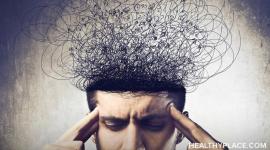Conduct Disorder Description and Symptoms
Full description of Conduct Disorder. Definition, signs, symptoms, causes of Conduct Disorder.
Description of Conduct Disorder
Conduct Disorder usually begins in late childhood or early adolescence and is more common among boys than girls. In general, children with a conduct disorder are selfish, do not relate well to others, and lack an appropriate sense of guilt. They tend to misperceive the behavior of others as threatening and react aggressively. They may engage in bullying, threatening, and frequent fights and may be cruel to animals. Other children with conduct disorder damage property, especially by setting fires. They may be deceitful or engage in theft. Seriously violating rules is common and includes running away from home and frequent truancy from school. Girls with conduct disorder are less likely than boys to be physically aggressive; they typically run away, lie, abuse substances, and sometimes engage in prostitution.
About half of the children with conduct disorder stop such behaviors by adulthood. The younger the child is when the conduct disorder began, the more likely the behavior is to continue. Adults in whom such behaviors persist often encounter legal trouble, chronically violate the rights of others, and are often diagnosed with antisocial personality disorder.
DSM IV Diagnostic Criteria for Conduct Disorder
A repetitive and persistent pattern of behavior in which the basic rights of others or major age-appropriate societal norms or rules are violated, as manifested by the presence of three (or more) of the following criteria in the past 12 months, with at least one criterion present in the past 6 months:
Aggression to people and animals
- often bullies, threatens, or intimidates others
- often initiates physical fights
- has used a weapon that can cause serious physical harm to others (e.g., a bat, brick, broken bottle, knife, gun)
- has been physically cruel to people
- has been physically cruel to animals
- has stolen while confronting a victim (e.g., mugging, purse snatching, extortion, armed robbery)
- has forced someone into sexual activity
Destruction of property
- has deliberately engaged in fire setting with the intention of causing serious damage
- has deliberately destroyed others' property (other than by setting fire)
Deceitfulness or theft
- has broken into someone else's house, building, or car
- often lies to obtain goods or favors or to avoid obligations (i.e. "cons" others)
- has stolen items of nontrivial value without confronting a victim (e.g. shoplifting, but without breaking and entering; forgery)
Serious violations of rules
- often stays out at night despite parental prohibitions, beginning before age 13 years old
- has run away from home overnight at least twice while living in parental or parental surrogate's home (or once without returning for a lengthy period)
- is often truant from school, beginning before age 13 years old
The disturbance in behavior causes clinically significant impairment in social, academic, or occupational functioning.
If the individual is age 18 years or older, criteria are not met for Antisocial Personality Disorder.
Causes of Conduct Disorder
Conduct disorder has both genetic and environmental components and is more common among the children of adults who themselves exhibited conduct problems when they were young. There are many other factors which researchers believe contribute to the development of the disorder. For example, children and teens with conduct disorder appear to have deficits in processing social information or social cues, and some may have been rejected by peers as young children.
Conduct disorder tends to co-occur with childhood psychiatric disorders, particularly Attention Deficit Hyperactivity Disorder (ADHD) and Mood Disorders (such as depression).
For more on conduct disorder and extensive information on parenting challenging children, visit the HealthyPlace.com Parenting Community.
Sources: 1. American Psychiatric Association. (1994). Diagnostic and Statistical Manual of Mental Disorders, Fourth Edition. Washington, DC: American Psychiatric Association. 2. Merck Manual, Home Edition for Patients and Caregivers, last revised 2006.
APA Reference
Staff, H.
(2009, January 2). Conduct Disorder Description and Symptoms, HealthyPlace. Retrieved
on 2025, December 21 from https://www.healthyplace.com/other-info/psychiatric-disorder-definitions/conduct-disorder



